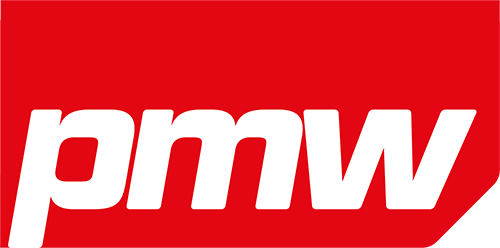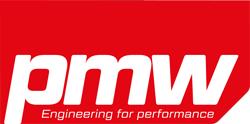Indycar is primed for a new look, described as ‘inspired by old fan favorites but whilst pointing toward what’s ‘next” for the series. Making its debut this week (July 24) in preparation for the 2018 season, cars again powered by Chevrolet and Honda engines will represent a collaboration of several key constituents – Indycar, Dallara and design experts in the United Kingdom – paired with input from drivers, teams and fans alike.
The entire process fell under the watchful eyes of Jay Frye, Indycar’s president of competition and operations; Bill Pappas, vice president of competition/race engineering; Tino Belli, director of aerodynamic development; and Dallara, supplier of the IR-12 chassis that has been used by all Verizon IndyCar Series competitors since 2012 and supplier of the new aerodynamic bodywork kit that will cover each chassis beginning next season.
The new car for 2018 will come in two specifications: one for superspeedway ovals and the other for use on short ovals, permanent road courses and temporary street circuits. Engineers have improved aero and body construction to ensure this daring new car better protects the stars of the series.
The process for the new design started in April 2016 with invitations to potential manufacturers. Soon after, Frye’s “reverse engineering” mantra came into play; ‘Make the car sweet to the eye, then tasty to the track. Design it and they will come.’
The project of outfitting the current Dallara IR-12 chassis with a new aerodynamic kit began more than a year ago. Design support came from Dallara and Chris Beatty, a UK-based concept design and 3D animation consultant. Throughout the process, competitors contributed to the design progress.
The public reveal of the concept began with drawings shown at the North American International Auto Show in Detroit in January. More images were shown in March, another batch in May. Dallara, which has supplied the IR-12 chassis to all Verizon IndyCar Series teams since 2012, was named in June to supply the universal kit as well, providing for a seamless merger of the two.
Fans of the sport liked the look of the low-line turbocharged Indy cars of the early 1990s, and that sentiment inspired the design of the new car. The goal was to give the car a sleek look reminiscent of those popular cars while offering an attractive edge to a new generation of drivers and fans.
A lower engine cover and lower short oval/road course rear wing endplates provide a long, lean look. Gone are the rear wheel guards, which made the car appear bulky. The wings are lower, smaller and more aesthetically pleasing. The LED display system on each car – which currently shows position in the running order, the time of a pit stop and when push-to-pass is engaged – is more sophisticated, expanding opportunities for providing fans with content.
The fan experience was taken into account with new camera positions strategically placed on the car. Views will be available from the nose and rear attenuator in addition to the traditional overhead and rear-view mirror locations.
Indycar and Dallara have six years of collective research and study with the IR-12 chassis to help understand the limits of control. This information is included in the design of the new car. Side impact protection has been significantly improved in a variety of ways, including the sidepod leading edge and induct duct joined with two bulkheads to create a proper crushable structure ahead of the radiator. The unitary construction is designed to absorb loads from all directions, and the structure is 8 to 10 inches wider at the driver’s hips. The top of the sidepod has been designed to exceed FIA side impact tests. The inlet duct, sidepod side and bottom have been constructed in hybrid carbon/dyneema fibers for improved penetration protection. Oil and water radiators have been moved forward, adding cushioning on the driver’s side. A wider leading edge mitigates the chance of another car’s wheel climbing on top of the underwing.
Simulations show the new car meets all of Indycar’s targets for not going airborne in spins at 90, 135 or 180 degrees yaw. The rear wing and front wing main plane are smaller and the centerline wicker from the nose of the car to the cockpit is tapered to provide protection against the car lifting when it spins.
The front wings are noticeably smaller with fewer pieces, reducing the amount of potential debris in incidents. Some elements have been added to fix previous instability issues (domed skids on the car’s undertray and a large tail fin) are no longer necessary. The stability and downforce provided by the domed skids on the 2017 car have been replaced by lateral domes attached to the underwings of the 2018 car. The rear wheel guards have been removed – therefore, the winglets have been removed. Fences in the rear of the underbody have been added to the road course/short oval package. Interestingly, the design has allowed for a cockpit windscreen application, when developed.
The current 2.2-liter, twin-turbocharged V-6 engines from Chevrolet and Honda will continue to be used. Modeling indicates oval-track qualifying speeds at Indianapolis Motor Speedway should be comparable to 2017 Indianapolis 500 speeds. Given the car will be lighter, higher speeds than previously seen at some venues are possible.
Drivers have been asking for the car to generate more downforce from underneath the car instead of on top using the wings. Now, 66% of the generated downforce will be at the bottom of the car in road course/short oval configuration, an increase of 19%.
Reducing the dependency on topside downforce has eliminated the need for many of the extra aero kit pieces, which added to the turbulent air an Indy car leaves in its wake. At a recent short oval test where some of the new kit’s components were affixed to a current car, the following distance for a trailing car was cut in half, improving maneuverability. If it’s easier to follow, it should be easier to pass, creating an opportunity for tighter, more exciting racing.
“The process started a year ago April, and we took the input of our fans, drivers, teams, manufacturers, partners – everyone shares in this,” explained Jay Frye, president, Indycar competition and operations. “There is a historical component to this design, and it comes with a very forward look and all the latest components. Although the design looked good on paper it looks even better in person. We couldn’t be more excited to get this car on the track.”
“2017 marks our 20th year in Indycar and we are glad that we can keep contributing to the great success that this series deserves,” added Giampaolo Dallara, founder and president, Dallara Automobili. “We have been working with the series’ organization and the teams to reach this shared goal, and this day represents an extraordinary step forward to achieve it.”


